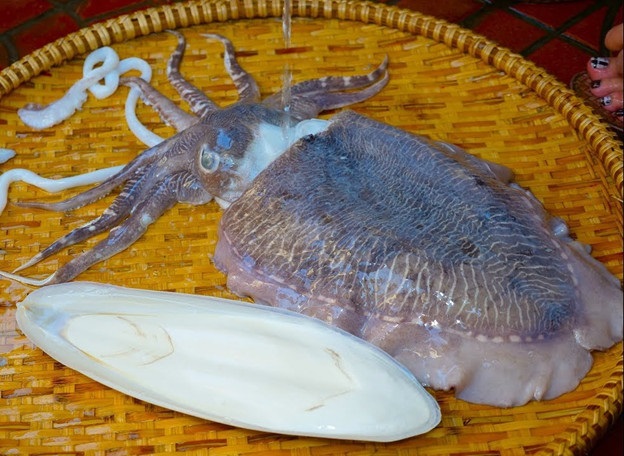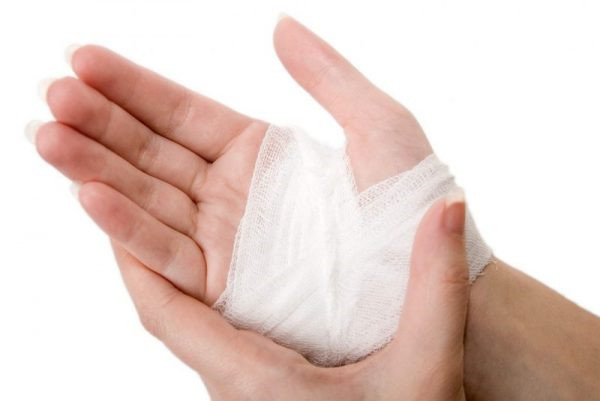WHAT IS A CUTTLEBONE?
Cuttlebone, known as “nang mực” in Vietnamese, is a unique structure found in cuttlefish, a type of cephalopod. This internal shell serves several purposes and is characterized by its hard and brittle nature.

SIZES OF CUTTLEBONE
The size of ink follicles in squids depends on both the age of the squid and the type of ink. Generally, the ink follicles in baby squids are smaller compared to those in adult squids. Additionally, there are variations in the size of ink capsules among different types of ink.
For cuttlefish, the sizes are categorized into several common types:
Type 1: 3 – 10 cm.
Type 2: 10 – 15 cm.
Type 3: Over 15 cm.
These size categories likely refer to the dimensions of the cuttlebone or internal shell found in cuttlefish, rather than the ink follicles. Cuttlebones play a role in buoyancy control for the cuttlefish.

USES OF CUTTLEBONE
Anti-Gastric Ulcers cuttlebone:
One notable use of cuttlefish is its potential to neutralize acid and alleviate stomach ulcers. Cuttlefish is processed by boiling, drying, and then being turned into a powder for medicinal use. The fiber and alkaline substances in cuttlefish create a protective barrier between the stomach lining and ulcer-causing agents, potentially reducing gastric bleeding.
Components like calcium carbonate salts, sodium chloride, and organic substances in cuttlefish may help neutralize the concentration of hydrochloric acid (HCl) in the stomach lining, thereby limiting the development of ulcers, reducing pain, and possibly increasing fluid secretion in this area.

It’s essential to note that while traditional uses of natural substances for medicinal purposes are interesting, it’s crucial to consult with healthcare professionals before relying solely on such remedies. Additionally, there might be a cultural or regional variation in terminologies, but generally, squid and cuttlefish refer to distinct marine animals.
Effective Hemostasis cuttlebone:
Effective hemostasis is one of the valued medicinal properties attributed to cuttlefish. The presence of tannins in the structural components of squid cysts allows for the constriction of blood vessels and reduction in fluid secretion. This tannin, when applied, adheres to the walls of blood vessels, leading to a decrease in blood flow. Ink cysts, particularly those filled with ink, are employed to address bleeding issues such as nosebleeds and bleeding teeth. The localized application of ink contributes to the effective cessation of bleeding in these cases. However, it’s essential to approach the utilization of natural substances in medicine with caution and seek guidance from healthcare professionals when necessary.

AS FOOD FOR PETS
Squid cysts serve as a nutritious food source rich in protein, calcium, iron, and various other minerals. They are utilized as a dietary supplement for a range of animals, particularly pets like birds and reptiles. The benefits of incorporating squid cysts into the diet of these animals are noteworthy, as they do not contribute to water fouling, unlike some other nutrient sources. For egg-laying animals, the calcium content in squid cysts is particularly beneficial as it can contribute to an increase in egg density. It’s important to note that before being fed to pets, squid cysts should undergo the process of boiling and sterilization to ensure their safety and suitability as a food source. This precautionary measure helps maintain the health and well-being of the animals consuming them.

MAKING JEWELRY CAST MOLDS
Cuttlefish is employed as a versatile material for crafting molds used in the production of metal jewelry and various decorative metals. Its capability to endure high temperatures makes it an ideal substance for this purpose. The process involves cutting the cuttlefish bone (not a squid cyst) in half, then rubbing the two halves together until the surface becomes uniformly flat. Subsequently, a mold is intricately carved into the cuttlefish bone, providing a resilient and heat-resistant form for casting metal jewelry and decorative items. This technique highlights the adaptability of cuttlefish in artistic and practical applications within the realm of metalworking.

NOTES WHEN USING SQUID CAPSULES:
– Hygiene and Sterilization:
Squid cysts may harbor harmful bacteria and parasites. It is crucial to wash them thoroughly with clean water or saltwater.
Boiling and sterilizing the squid cysts before use is essential to eliminate potential health risks.
– Moderation Due to Fiber Content:
Cuttlefish, a source of squid capsules, contains a substantial amount of fiber.
Excessive consumption can lead to constipation, so it’s advisable to use squid in moderation.
In cases where cuttlefish is used to address stomach pain, a balanced approach involves incorporating plenty of green vegetables into the diet and ensuring adequate water intake.
– Selection of Quality Ink Capsules: When using ink capsules for medicinal purposes, it’s important to choose those that are hard, not easily breakable, and have a white appearance akin to steam.
This selection criterion is emphasized to ensure the best effectiveness of the ink capsules in their intended medicinal application.
If you are interested, contact us now to place an order or get more detailed information
– Email: info@hxcorp.com.vn
– Whatsapp: +84342288943
– Alibaba: HANG XANH COMPANY LIMITED
Thank you!
Related articles
Water hyacinth – From waste to unique and diverse products
Instructions for choosing chewing sticks suitable for the size and age of your dog.
What is coffee wood dog bone? How it works?



